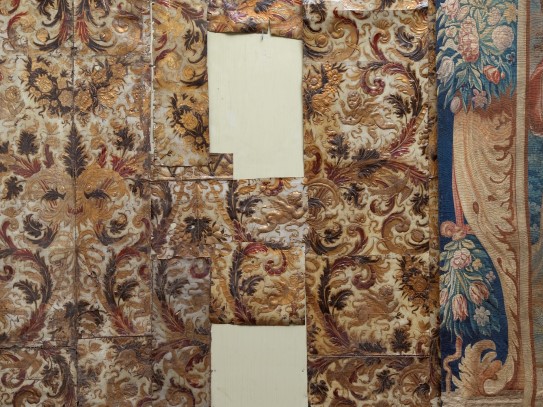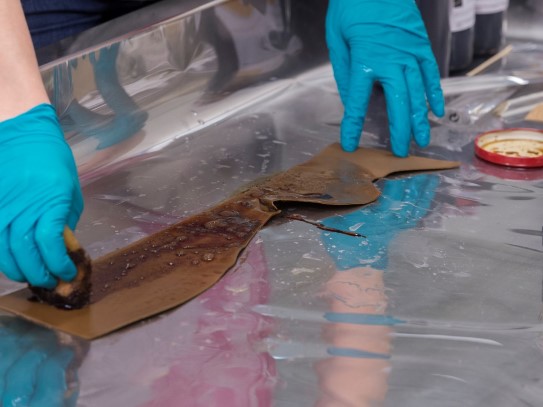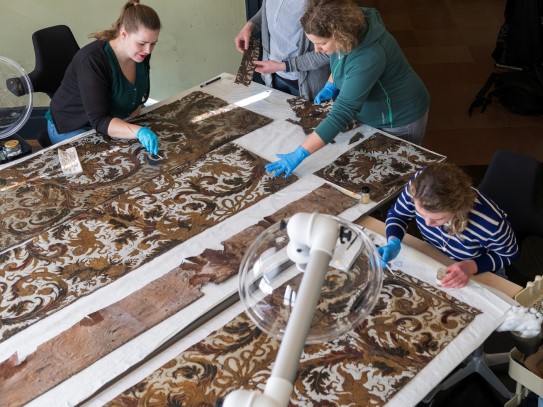From a Danish manor house to the National Museum
After thorough conservation work, a magnificent gilded leather wall covering from the 17th century will soon be ready for the new National Museum.
Text by Reidun Solheim, Communications Adviser.
Probably produced between 1650 and 1662 in the northern Netherlands, the gilded leather wall covering originally adorned one of the rooms at Højriis Castle, a manor house in Denmark, before it was bought for the Museum of Decorative Arts and Design by the museum’s Society of Friends in 1934.
The original intention was to cover all the walls of the museum’s baroque hall, but the material literally did not stretch that far.

Rich decor
The wall covering consists of some 136 panels, with a total surface area of 38.38 square metres. It is richly decorated with motifs of flowers and plants, grape clusters, cherubs, butterflies and snails. The leather was silver-coated, then varnished with oils that form a protective layer with a gold sheen. The motifs were subsequently painted in green and red against a white background.

To create the reliefs, the decorative figures were first carved in blocks of wood. The leather was then moistened and pressed onto the forms. Known as the Dutch method, this technique allows efficient production. It is rarely used today, partly because the forms are expensive to produce.
Conserving a living material
Conservation work began in 2011. In order to reproduce the pattern of the wall covering after cleaning, the panels were photographed and recombined with the help of a computer programme.

Washing and cleaning gilded leather. Photo: Nasjonalmuseet / Annar Bjørgli

Nailed to the wall
At Højriis Castle and later at the Museum of Decorative Arts and Design the leather panels were originally nailed to the wall, a form of mounting that lacked flexibility. Since leather is an organic material, it shrinks and expands with the changing seasons. Over the years, this has resulted in tears and holes, which the conservators have repaired by filling them with new leather. This was pre-dyed to harmonise with the gilding of the original.
As a result of centuries of natural ageing, exposed to varied light conditions, dust, dirt and air pollution, the colours of the wall covering have lost their brilliance. Green tones have dulled to dark brown, and the white has turned yellow. To restore the wall covering as far as possible to its original appearance, it was necessary to remove the old varnish and dirt – a major part of the conservation work. Since the original varnish is highly sensitive to solvents, this work was only performed on the brighter sections of the material.

As a precautionary measure, the conservators have mounted the wall covering on flexible stretcher frames. This allows the leather to shrink and expand in response to climatic fluctuations without incurring damage. In order to mount the leather panels on the stretchers, it was necessary to glue extra strips of leather along all the edges. To keep the new leather as inconspicuous as possible, it was dyed a golden brown to resemble the gilding of the original material.
On show in all its glory in the new museum
Conservation work on the wall covering began in autumn 2016 and will be complete in spring 2019. In the new National Museum, which opens in 2022, it will be mounted as a sumptuous backdrop for European furniture from the 17th century.